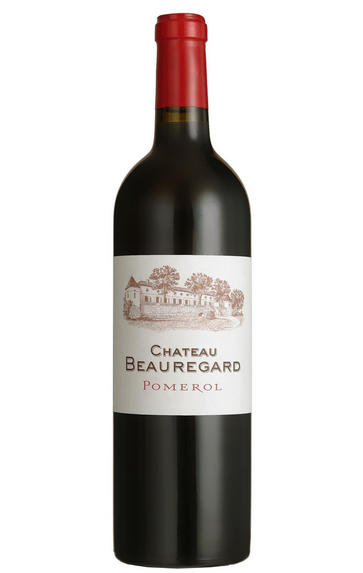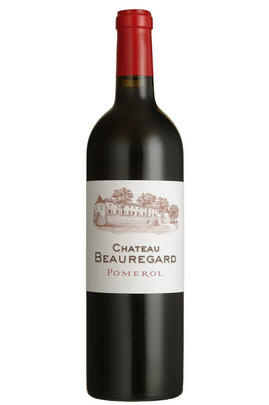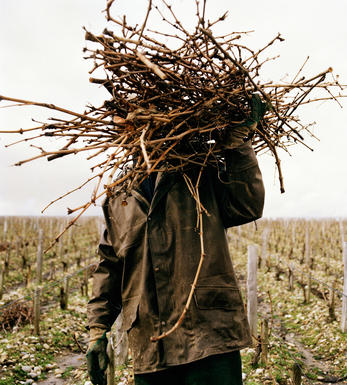
2009 Château Beauregard, Pomerol, Bordeaux

Critics reviews
While Beauregard's wines have a tendency to be monolithic and oaky, the 2009 is one of the finest I have tasted from this estate. Its dense ruby/purple color is accompanied by copious quantities of licorice, blackberry, and mulberry characteristics as well as silky tannins, a sweet, fat mid-palate, and a long finish with just a hint of oak. It should drink well for 10-15 years.
(Robert Parker - Wine Advocate - April 2010)
Glossy and dark. Powerful dark chocolate notes. Easy and rather too casual on the palate with quite marked acid on the end. Nothing to object to but nothing to get seriously excited about.
(Jancis Robinson MW - jancisrobinson.com - April 2010)
A little lean, but some good berry and sweet tobacco character, with a nice hint of new wood.
(James Suckling - Wine Spectator - Apr 2010)
Ripe and well structured. Plenty of length and freshness. Attractive fruit. Not a blockbuster but really harmonious.
(Steven Spurrier - Decanter - April 2010)
While Beauregard's wines have a tendency to be monolithic and oaky, the 2009 is one of the finest I have tasted from this estate. Its dense ruby/purple color is accompanied by copious quantities of licorice, blackberry, and mulberry characteristics as well as silky tannins, a sweet, fat mid-palate, and a long finish with just a hint of oak. It should drink well for 10-15 years.
(Robert Parker - Wine Advocate - April 2010)
Glossy and dark. Powerful dark chocolate notes. Easy and rather too casual on the palate with quite marked acid on the end. Nothing to object to but nothing to get seriously excited about.
(Jancis Robinson MW - jancisrobinson.com - April 2010)
A little lean, but some good berry and sweet tobacco character, with a nice hint of new wood.
(James Suckling - Wine Spectator - Apr 2010)
Ripe and well structured. Plenty of length and freshness. Attractive fruit. Not a blockbuster but really harmonious.
(Steven Spurrier - Decanter - April 2010)
About this WINE

Chateau Beauregard
Château Beauregard is one of the few Pomerol properties to actually have a château, a distinctive and classic 18th century building that was designed by a pupil of Victor Louis. Beauregard has had several owners and in 1991 it was acquired by Crédit Foncière, which also owns Château Bastor-Lamontagne in Sauternes.
Beauregard is located just outside the village of Catusseau, opposite Château Petit-Village. Its 17 hectares of vineyard are planted on soils rich in gravel - consequently, the wine has a higher proportion of Cabernet grapes (Cabernet Franc 35%, Cabernet Sauvignon 5%) in its blend than most Pomerols.
The grapes are fermented in temperature-controlled, stainless steel vats and the wine is matured in oak casks (70% new) for 18 months. Quality at Beauregard has improved significantly since 1991 and winemaker Vincent Priou is now producing finely crafted and supremely elegant clarets.

St Émilion
St Émilion is one of Bordeaux's largest producing appellations, producing more wine than Listrac, Moulis, St Estèphe, Pauillac, St Julien and Margaux put together. St Emilion has been producing wine for longer than the Médoc but its lack of accessibility to Bordeaux's port and market-restricted exports to mainland Europe meant the region initially did not enjoy the commercial success that funded the great châteaux of the Left Bank.
St Émilion itself is the prettiest of Bordeaux's wine towns, perched on top of the steep limestone slopes upon which many of the region's finest vineyards are situated. However, more than half of the appellation's vineyards lie on the plain between the town and the Dordogne River on sandy, alluvial soils with a sprinkling of gravel.
Further diversity is added by a small, complex gravel bed to the north-east of the region on the border with Pomerol. Atypically for St Émilion, this allows Cabernet Franc and, to a lesser extent, Cabernet Sauvignon to prosper and defines the personality of the great wines such as Ch. Cheval Blanc.
In the early 1990s there was an explosion of experimentation and evolution, leading to the rise of the garagistes, producers of deeply-concentrated wines made in very small quantities and offered at high prices. The appellation is also surrounded by four satellite appellations, Montagne, Lussac, Puisseguin and St. Georges, which enjoy a family similarity but not the complexity of the best wines.
St Émilion was first officially classified in 1954, and is the most meritocratic classification system in Bordeaux, as it is regularly amended. The most recent revision of the classification was in 2012

Merlot
The most widely planted grape in Bordeaux and a grape that has been on a relentless expansion drive throughout the world in the last decade. Merlot is adaptable to most soils and is relatively simple to cultivate. It is a vigorous naturally high yielding grape that requires savage pruning - over-cropped Merlot-based wines are dilute and bland. It is also vital to pick at optimum ripeness as Merlot can quickly lose its varietal characteristics if harvested overripe.
In St.Emilion and Pomerol it withstands the moist clay rich soils far better than Cabernet grapes, and at it best produces opulently rich, plummy clarets with succulent fruitcake-like nuances. Le Pin, Pétrus and Clinet are examples of hedonistically rich Merlot wines at their very best. It also plays a key supporting role in filling out the middle palate of the Cabernet-dominated wines of the Médoc and Graves.
Merlot is now grown in virtually all wine growing countries and is particularly successful in California, Chile and Northern Italy.


Buying options
Add to wishlist
Description
While Beauregard's wines have a tendency to be monolithic and oaky, the 2009 is one of the finest I have tasted from this estate. Its dense ruby/purple color is accompanied by copious quantities of licorice, blackberry, and mulberry characteristics as well as silky tannins, a sweet, fat mid-palate, and a long finish with just a hint of oak. It should drink well for 10-15 years.
(Robert Parker - Wine Advocate - April 2010)
Glossy and dark. Powerful dark chocolate notes. Easy and rather too casual on the palate with quite marked acid on the end. Nothing to object to but nothing to get seriously excited about.
(Jancis Robinson MW - jancisrobinson.com - April 2010)
A little lean, but some good berry and sweet tobacco character, with a nice hint of new wood.
(James Suckling - Wine Spectator - Apr 2010)
Ripe and well structured. Plenty of length and freshness. Attractive fruit. Not a blockbuster but really harmonious.
(Steven Spurrier - Decanter - April 2010)
wine at a glance
Delivery and quality guarantee